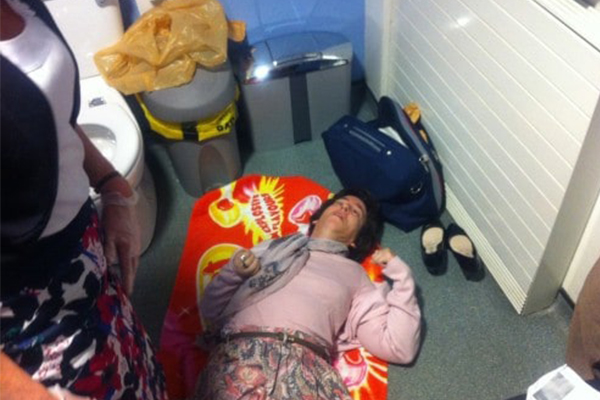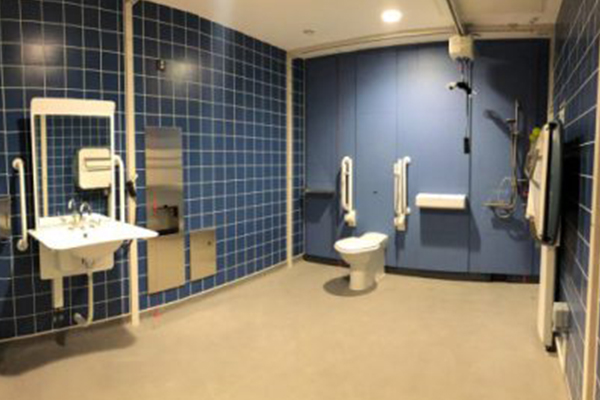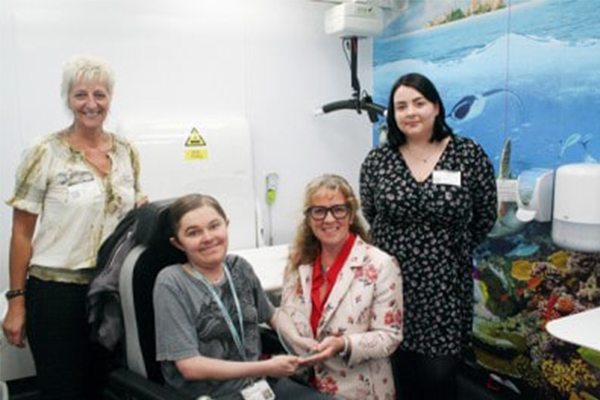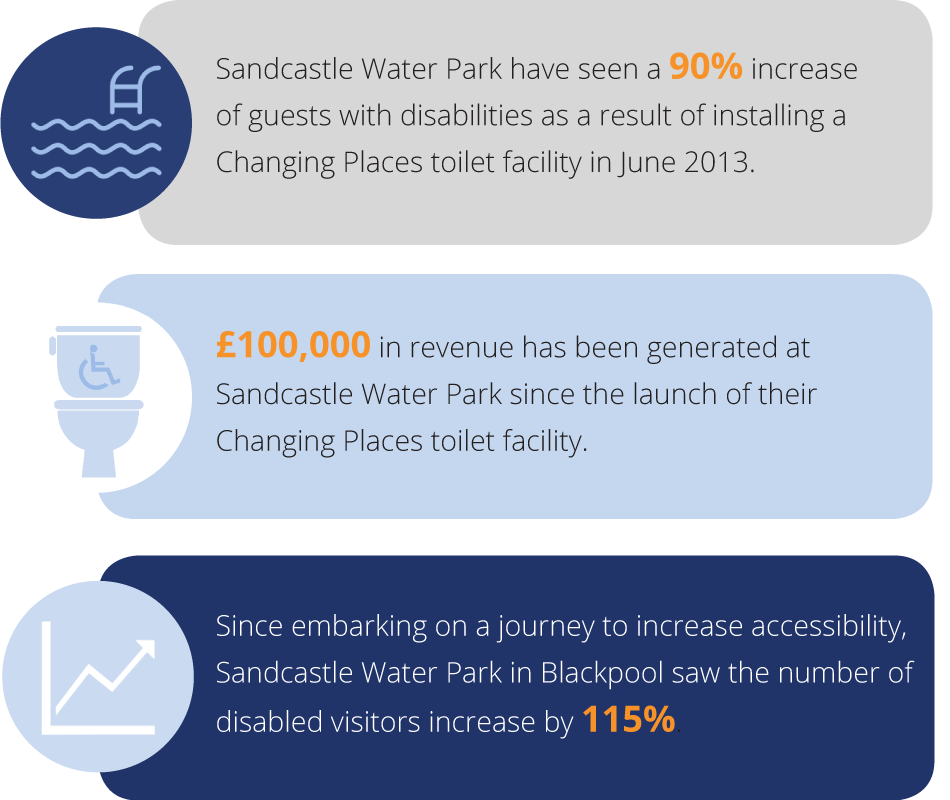The Business Case for Changing Places Toilets
For many organisations, the decision to enhance their disabled provision goes far beyond ‘doing the right thing’. Justifying the cost, demonstrating real value and tangible improvement to their business and community are also crucial. The following guide puts forward clear financial, legal and moral arguments for investment in a Changing Places toilet.
Financial Implications
A Changing Places toilet can unlock a new customer base and accompanying revenue.
Missed Opportunity:
Figures released by VisitEngland show that 83% of disabled people have made a conscious decision not to visit an unwelcoming or inaccessible business — particularly those with no suitable, clean toilet facilities.
Put simply, businesses with a Changing Places toilet are capitalising on missed revenue from those that don’t. And that’s a lot of cash!
The Purple Pound:
The money that households with a disabled person spend is estimated to be worth £212 billion, according to Government research. This figure — the so-called ‘purple pound’ — relates to all 12.2 million disabled people in the UK.
Whilst many of these people can use a standard accessible (’disabled’) toilet, there’s still a huge number of profoundly disabled people whose families are having to carefully choose where to spend their money because so few businesses and attractions cater for their needs.
Legal Implications
Mitigating Risk:
One of the biggest concerns about developing a Changing Places facility is the potential liability should things go wrong or an accident occurs.
It’s important to remember that liability doesn’t normally arise due to an accident occurring — it’s more closely linked to lack of health and safety precautions. A comprehensive risk assessment should prevent this.
BS 8300:2018 :
BS 8300:2018 (Design of buildings and their approaches to meet the needs of disabled people. Code of practice.) sets down good practice for accessible building design, advising that disabled people should be able to find and use suitable toilet accommodation no less easily that non-disabled people.
The standard further recommends that Changing Places toilets should be provided in larger buildings and complexes.
Equality Act 2010:
Under the Equality Act 2010, service providers are required to make reasonable changes where a disabled person would otherwise be at a substantial disadvantage.
The Act also requires that service providers think ahead and address barriers that impede disabled people — i.e. you shouldn’t be waiting until a disabled person experiences difficulties using your facilities.
Building Regulations Approved Document M 2013:
In large building developments, Building Regulations Part M states that a Changing Places toilet is ‘desirable’.
Toilet accommodation must be suitable for all people who use your building, whilst the time needed to reach a wheelchair-accessible toilet should be kept to a minimum.
Moral Implications
Creating Opportunity:
Over a quarter of a million severely disabled people in the UK, including those with profound and multiple learning disabilities, don’t have access to public toilet facilities that meet their needs. As a result, these people can’t participate in the day-to-day activities that so many of us take for granted.
Changing Places aren’t just toilets: They create an opportunity for some of the most vulnerable people in our community.
Treating Customers With Dignity:
Standard accessible (’disabled’) toilets don’t provide changing benches or hoists, and most are too small to accommodate more than one person.
Without Changing Places toilets, severely disabled customers are put at risk. Families have to change them on toilet floors, in the back of their car, or a number of other places that are equally unhygienic and undignified.
Social Marketing:
Changing Places is a facility that is vital to the disabled community. Users LOVE sharing testimonials and will be a great source off positive press for your business:





